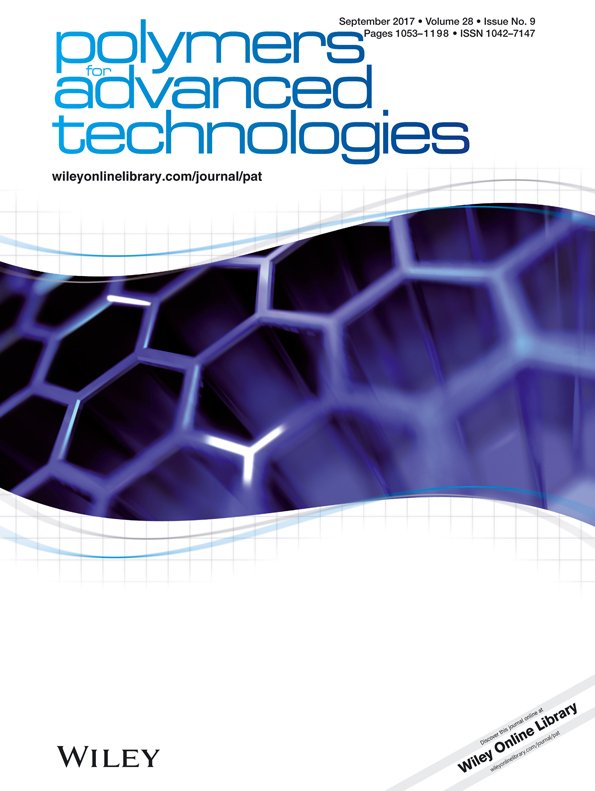High elasticity, strength, and biocompatible amphiphilic hydrogel via click chemistry and ferric ion coordination
Abstract
An amphiphilic interpenetrating polymer network hydrogel was designed and synthesized using click chemistry and ferric ion coordination. The first polymer network was formed through the reaction of azide-modified PEG (N3-PEGn-N3) and alkynyl-pendant linear PPG derivatives ((PPGm(C≡CH))n) through click chemistry and mixed with poly(ethylene glycol-dopamine) macromolecules. The second polymer network was formed through ferric ion coordination with poly(ethylene glycol-dopamine). Interpenetrating polymer networks give the hydrogel unique amphiphilic properties and higher mechanical strength and thermal stability. Swelling ratio and degradation rate could be adjusted by controlling the ratio of poly(ethylene glycol-dopamine) in the hydrogel network. Given that in vivo subcutaneous implantation revealed no infection and no obvious abnormalities, the hydrogel exhibits high biocompatibility. The feature indicates that these hydrogels have a promising application in the field of biomaterials and tissue engineering. Copyright © 2016 John Wiley & Sons, Ltd.




